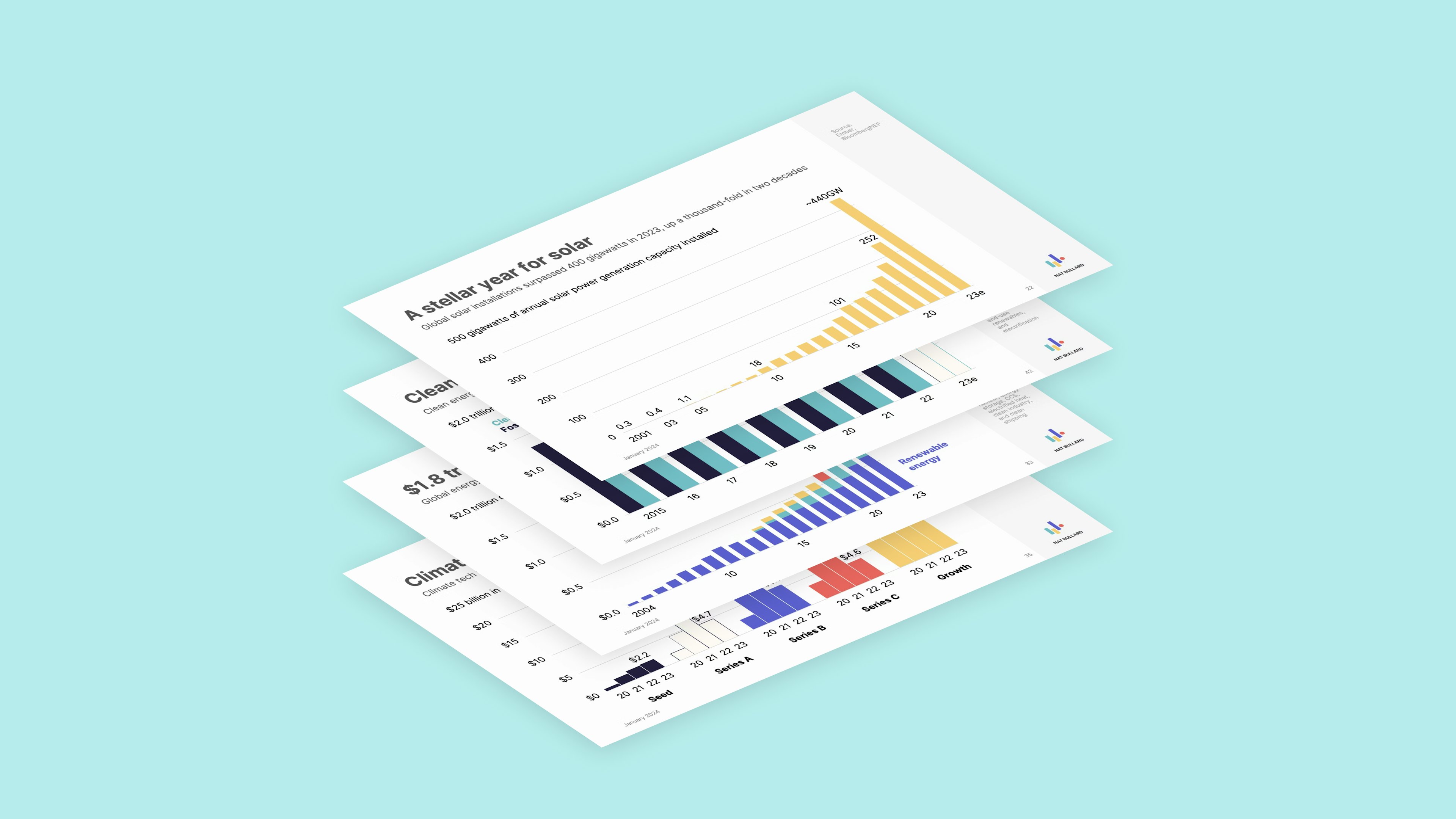What's next for climate tech in 2023

For almost a half century we’ve talked about quitting our addiction to fossil fuels, and in 2022, the US finally took decisive action through a series of infrastructure bills to truly begin the energy transition. The Federal Sustainability Plan, the SEC Climate Proposal, and the Inflation Reduction Act together will reshape the American economy over the coming decades.
But the dangerous effects of climate change continue on a global scale, and energy shocks continue to roil Europe and the world. Subsidies and tax credits won’t be enough.
Energy innovators building a distributed, responsive, and carbon-free power system need digital access to the existing network — the millions of utility meters deployed at utilities worldwide — to build solutions. Arcadia’s software platform enables this new infrastructure with simple software tools to unlock data across utility monopolies. But we’re just one piece of the puzzle. Looking at our business and the changing landscape before us, I see five key trends and changes that will make waves in climate tech this year:
1. The rise of the independent power producer
The IRA makes it easier to finance, develop, and own clean energy assets — traditionally capabilities left to utilities. The IRA also makes it simpler for any developer to build and be the long-term asset owner and manager of a project, introducing hundreds of thousands of new players to power markets. Perhaps most importantly, the credits and subsidies apply across products (solar, storage, EV charging, hydrogen, geothermal, etc.) which means all of these categories are about to get a boost.
2. Cutting the red tape around energy markets
As more and more new entrants start producing, storing, and selling power, regulators will adapt and liberalize their market structures. The IRA is a multi-billion dollar carrot of economic development and decarbonization dollars that many state legislators will want to bring home. I believe we’ll start to see states and regions change their tariff structures to enable smart EV charging and community solar, simplify permitting rules, and potentially even join regional power pools to expand clean energy access. This will remove some of the red tape that’s stifled community solar growth for years.
3. Data as the new core sustainability asset
Here’s the thing: most carbon accounting is made up. It’s based on estimates instead of the actual meter-level data in the built environment. The new SEC climate disclosure requirements will create a corporate need for partners that help companies meet and exceed reporting expectations. Accurate emissions reporting will no longer be a “nice-to-have” but rather a “must have.” Data integration and processing power, accurate tracking, analytical capability, and the expertise to extract meaningful insights from this information will be force multipliers in the new era of ESG.

4. The home contractor revolution is coming
There are roughly 600,000 people employed in the HVAC contracting industry, which happens to also be one of the most fragmented industries in the US. Currently local, profitable, and sleepy, these businesses will be put on steroids thanks to the IRA. We’ll see new demand for products like heat pumps and EV chargers, so expect new professionals and existing players to step up their game, re-train workers en masse, and rush to the front lines of electrification.
5. Cleaner is cheaper
With inflation rising and uncertainty in global natural gas prices persisting, utilities everywhere started raising rates in 2023. Inflation hovered around 8% while electricity prices jumped 15.8% in the last year. This is largely the result of high-priced natural gas, which is used to generate nearly 40% of the nation’s power. As utility retail rates continue to rise with fossil fuels and new grid infrastructure, distributed energy resources (like battery storage and rooftop solar) will be deployed at a faster clip to deliver cheaper energy than the monopoly service. Renewables are inherently deflationary because of the lack of fuel costs, so we’ll see this spiral — high utility rates pushing us toward distributed energy resources — continue to spin faster in 2023.
The TLDR
2023 will undoubtedly bring political, economic, and technological changes to the climate space. As policymakers begin to legislate greater accountability, companies like Arcadia are ready to iterate, problem solve, and pave the way toward a zero-carbon future. There has perhaps never been a year more ripe for energy innovation than this one, and I’m ready for all of us to roll up our sleeves to do bigger, better things.

Ready to work with Arcadia in 2023?
Contact our team

